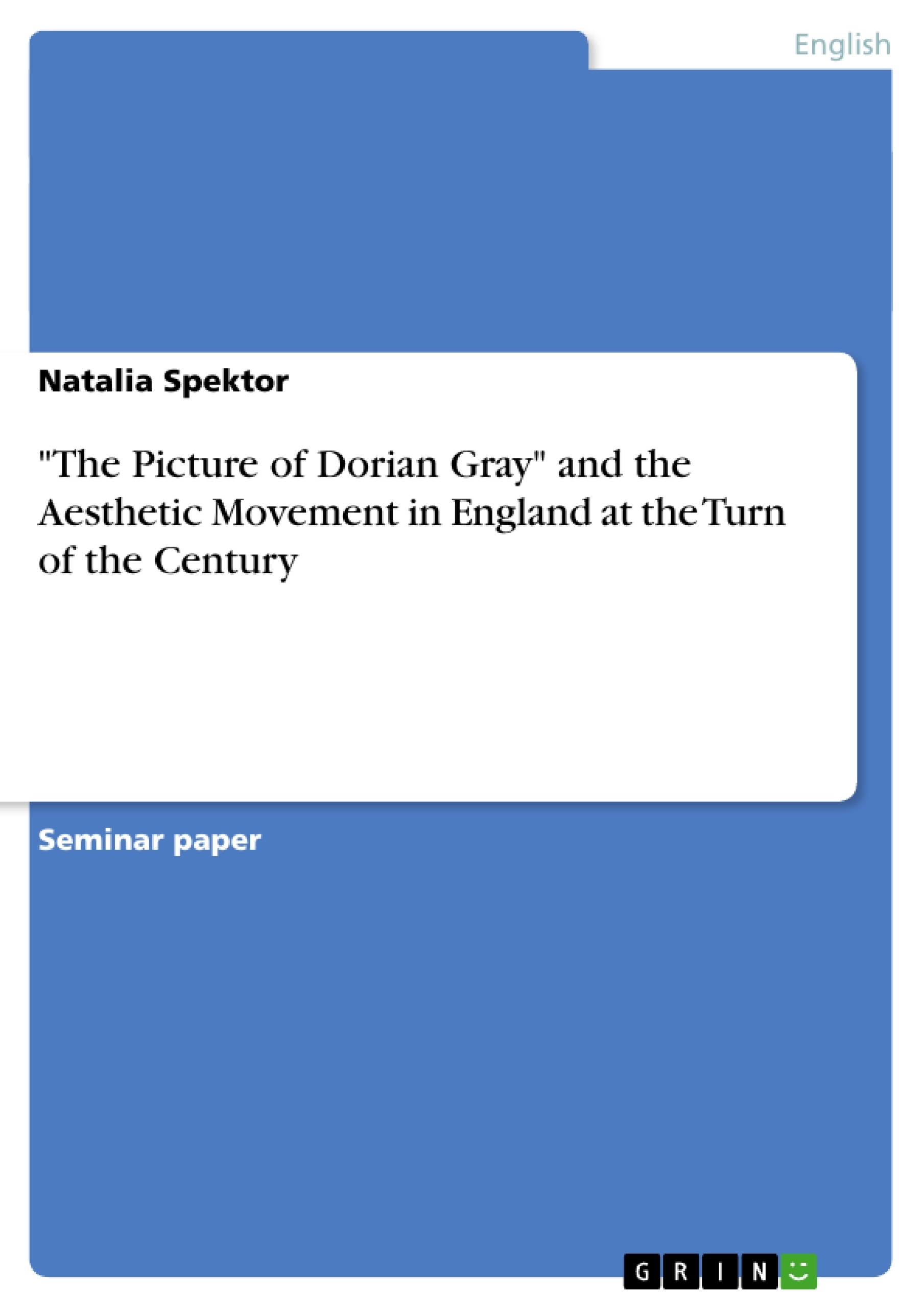There are some famous writers at the end of the 19th century who are often mentioned as “decadent”. They have asserted the superiority of beauty and pleasure over all other considerations. Oscar Wilde’s novel The Picture of Dorian Gray presents the aestheticism and the hedonist way of living. The novel anticipates developments and structures of society of that time. The importance of Dorian’s experiences refutes the decadent theories which are described in the Yellow Book that enthralls the protagonist. The novel as a whole can be seen as a psychological study which analyzes the gradual debasement of Dorian’s nature. At the end of the story he is responsible for every vice and crime including murder.
The author shows that on the one hand pleasure and beauty are the highest goods, on the other hand he argues that they also bring death and crime. The task of this research paper is to analyze the mentioned contradiction and the influence of the Aesthetic movement on the novel as well as Oscar Wilde’s view of art.
I would like to begin with a brief survey of the social and intellectual background at the end of the 19th century, exploring the major art movements of that time and how far they affect Wilde’s work. Afterwards his main principles of Aestheticism and their reflection in the novel are analyzed as well as Dorian’s life under the influence of the hedonist model.
Oscar Wilde’s novel The Picture of Dorian Gray reveals the contradictions of Wilde’s relationship with the decadent trends of that time. He adopts and proclaims their esthetical and literary views, but the flippant amoralism that he sometimes parades so defiantly is belied by the final catastrophe descending upon his hero as a result of his obvious moral degradation. The novel shows that man’s chief purpose in life can not be seeking pleasure. To be good is more important than to be beautiful. Though in the preface to his novel Oscar Wilde declares that all art is quite useless, the novel itself proves the opposite. The tension between the aesthetic (Art) and the moral (Life) is the focus of the novel. In setting a portrait, a work of art, at the center of the action, Wilde affects the interplay of natural perception and moral judgment in the novel.
The ideal of art for art’s sake was proclaimed by Wilde but hardly ever consistently put into practice.
Table of Contents
- Introduction
- Aesthetic movement in England
- The Theory of Art for Art's Sake
- The main Principles of Oscar Wilde's Aestheticism
- The Picture of Dorian Gray in the Light of Decadent Conception
- Conclusion
- Bibliography
Objectives and Key Themes
This research paper aims to analyze the influence of the Aesthetic movement on Oscar Wilde's novel The Picture of Dorian Gray, focusing on the contradiction between beauty and pleasure as the highest goods and their potential for bringing death and crime. The paper explores the novel's portrayal of aestheticism and hedonism, examining how Dorian Gray's experiences refute the decadent theories presented in the Yellow Book. It aims to analyze the novel as a psychological study of Dorian Gray's gradual moral decline.
- The influence of the Aesthetic movement on Oscar Wilde's work.
- The concept of Art for Art's Sake and its role in the novel.
- The hedonist lifestyle and its impact on Dorian Gray's character.
- The relationship between beauty, pleasure, death, and crime.
- The novel as a psychological study of moral decay.
Chapter Summaries
- Introduction: The introduction sets the context by discussing the "decadent" writers of the late 19th century who prioritized beauty and pleasure. It introduces The Picture of Dorian Gray as a reflection of aestheticism and hedonism, foreshadowing Dorian's moral downfall and the novel's psychological exploration of his character.
- Aesthetic movement in England: This chapter examines the social and intellectual background of the late 19th century, highlighting the emergence of the Aesthetic movement as a reaction against Victorian morality and the rise of industrialization. It explores the key figures and principles of the movement, emphasizing the concept of "Art for Art's Sake" and the embrace of beauty and pleasure over social and moral obligations. It also introduces the concept of "Decadence" as a cultural and social phenomenon characterized by pessimism, artificiality, and a focus on aesthetics.
Keywords
The main keywords and focus topics of this work include Aesthetic movement, Art for Art's Sake, hedonism, Decadence, Oscar Wilde, The Picture of Dorian Gray, beauty, pleasure, morality, psychological study, moral decline, and the Yellow Book.
- Quote paper
- Natalia Spektor (Author), 2007, "The Picture of Dorian Gray" and the Aesthetic Movement in England at the Turn of the Century , Munich, GRIN Verlag, https://www.grin.com/document/73870




